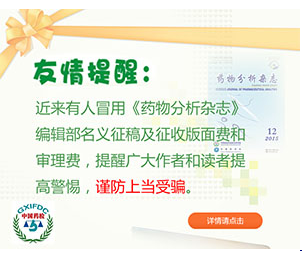[1] CRAPPER DR, KRISHNAN SS, QUITTKAT S. Aluminium, neurofibrillary degeneration and Alzheimer's disease[J]. Brain, 1976,99(1):67
[2] OTT SM. Aluminum-related osteomalacia[J]. Int J Artif Organs, 1983,6(4):173
[3] KAISER L, SCHWARTZ KA. Aluminum-induced anemia[J]. Am J Kidney Dis, 1985, 6(5):348
[4] WANG L. Studies on the aluminium content in Chinese foods and the aximum permitled levels of aluminum in wheat flour products[J]. Biomed Environ Sci, 1994,7(1):91
[5] 刘凤贞,于德奎,吕严,等. 国人铝日允许摄入量的初步研究[J]. 环境与健康杂志, 1991, 8(2):49 LIU FZ, YU DK, LÜ Y, et al. Preliminary study on ADI of aluminium for Chinese[J]. J Environ Health, 1991,8(2):49
[6] 王林,苏德昭,王永芳,等. 中国居民每日摄铝量及面制食品中铝限量卫生标准研究[J]. 中国食品卫生杂志, 1996, 8(2):1 WANG L,SU DZ, WANG YF, et al. Study on ADI of aluminium for Chinese citizens and the maximum permitted amount of aluminium in flour food products[J]. Chin J Food Hyg, 1996,8(2):1
[7] 曹云. 铝对人体健康影响及面制食品中铝添加量和测定的研究进展[J]. 河南预防医学杂志, 2015, 26(5):354 CAO Y. Research progress on the effect of aluminium on human health and the amount and determination of aluminum in flour food[J]. Henan J Prev Med, 2015, 26(5):354
[8] 梁春穗,李海. 茶叶中铝的来源及溶解性研究[J]. 现代预防医学, 1996, 23(4):235 LIANG CS, LI H. Studies on the source of aluminium in teas and its solubility[J]. Mod Prev Med, 1996, 23(4):235
[9] 刘淑君,平庆杰,杨艳虹,等. 进口茶叶中铝含量调查分析[J]. 食品研究与开发, 2014, 35(22):119 LIU SJ, PING QJ, YANG YH, et al. Investigation and analysis on the content of aluminium in import tea[J]. Food Res Dev,2014, 35(22):119
[10] 高舸,陶锐. 茶叶中铝的卫生学实验研究[J]. 中国公共卫生, 2011, 17(3):221 GAO G,TAO R. Experimental studies on the hygienics of aluminum in tea[J]. China Public Health, 2011,17(3):221
[11] 王文伟,骆和东,周娜福,等. 福建省地产茶叶中14种元素的分析与研究[J]. 中国食品卫生杂志,2011,23(3):265 WANG WW,LUO HD,ZHOU NF,et al. Fourteen kinds of elements in teas from Fujian province[J]. Chin J Food Hyg,2011,23(3):265
[12] 陈波,颜治,赵旭,等. 元素含量分析应用于十种中国名茶的产地鉴别[J]. 湘潭大学自然科学学报, 2016, 38(1):61 CHEN B, YAN Z, ZHAO X, et al. Regional indentification of 10 kinds of Chinese famous tea by muti-element analysis[J]. Nat Sci J Xiangtan Univ, 2016, 38(1):61
[13] 杨大鹏,刘晶. ICP-AES法测定福鼎白茶中铝及铅元素的含量及其溶出特性的研究[J]. 茶叶,2016, 42(2):73 YANG DP, LIU J. Studies on determination of Al and Pb elements in white tea by ICP-AES and their dissolution characteristics[J]. J Tea,2016, 42(2):73
[14] 吴志丹,江福英,张磊. 茶树品种及采摘时期对茶叶绿含量的影响[J]. 茶叶学报,2016, 57(1):13 WU ZD, JIANG FY, ZHANG L. Aluminum content in Camellia sinensis(L.)O. Kuntze cultivars with delayed leaf-plucking[J]. Acta Tea Sin, 2016, 57(1):13
[15] 郑功宇,陈寿松,苏培凌,等. 铝对茶叶主要化学品质影响的研究进展[J]. 茶叶科学技术,2013(3):1 ZHENG GY, CHEN SS, SHU PL, et al. Research progress on effects of aluminium on main chemical components of tea[J]. Tea Sci Technol,2013(3):1




